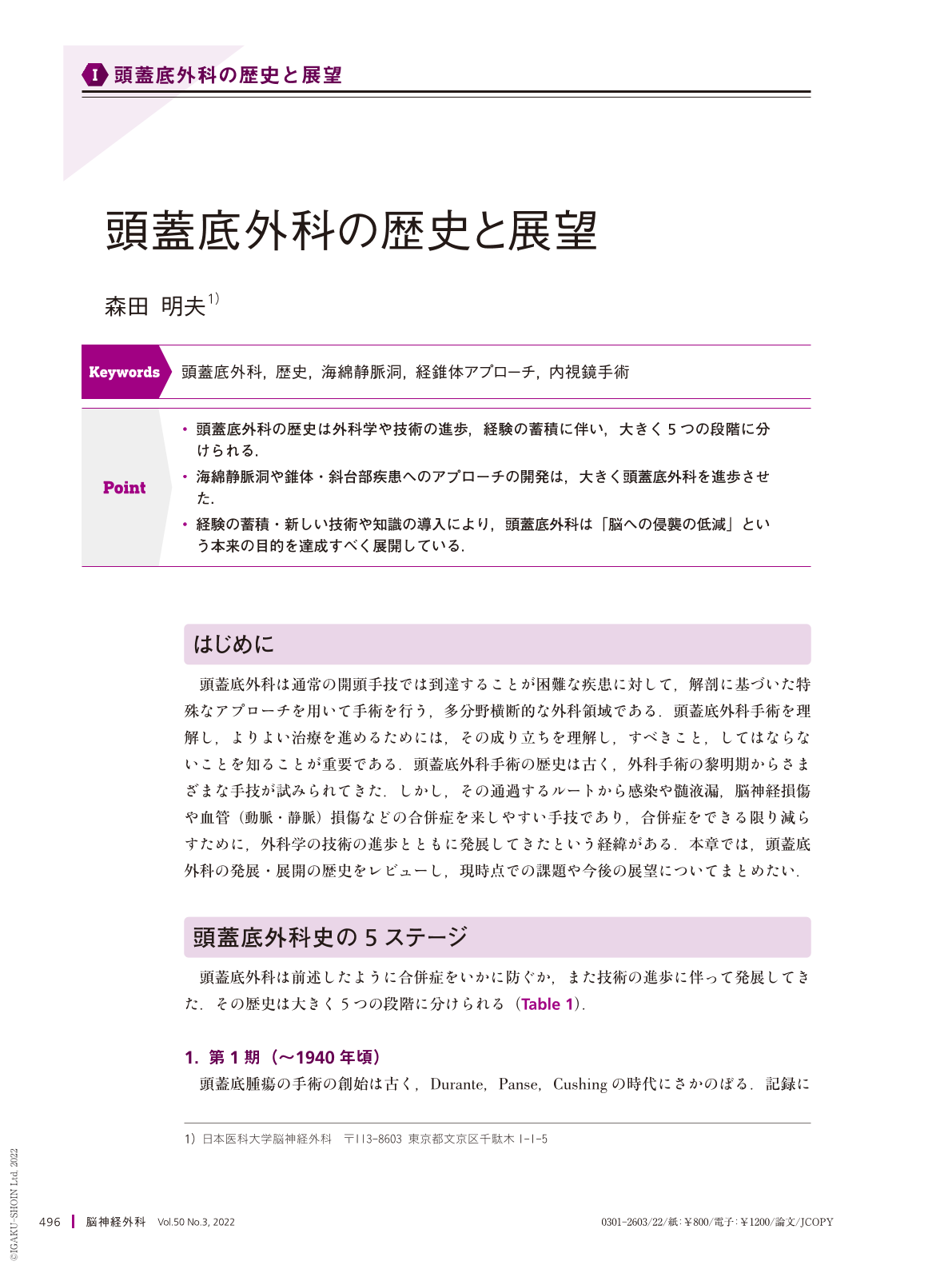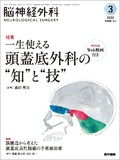Japanese
English
- 有料閲覧
- Abstract 文献概要
- 1ページ目 Look Inside
- 参考文献 Reference
Point
・頭蓋底外科の歴史は外科学や技術の進歩,経験の蓄積に伴い,大きく5つの段階に分けられる.
・海綿静脈洞や錐体・斜台部疾患へのアプローチの開発は,大きく頭蓋底外科を進歩させた.
・経験の蓄積・新しい技術や知識の導入により,頭蓋底外科は「脳への侵襲の低減」という本来の目的を達成すべく展開している.
Skull base surgery is a surgical field that involves the cooperation of multiple surgical and medical specialties, including neurosurgery, head-neck surgery, plastic-reconstructive surgery, radiation oncology, as well as multiple medical supporting teams. This field has been developed with the collaborative efforts of these medical specialties, and its history can be divided into five phases: Beginning of surgery(Prior to 1940); Early skull base surgery driven by the ENT-HN surgery group(1940-70); Conventional skull base surgery development based on anatomical, physiological knowledge and microsurgical equipment and technique(1970-90); Reflection and consolidation of the surgical dimension(1995-2005); and Evolution of endoscopic and new skull base surgical techniques(2005-). Several topics and advancements have improved this surgical field, such as access to the cavernous sinus, petrosal-temporal bone, and foramen magnum; concepts of minimally invasive surgical techniques; advanced endoscopic instruments; knowledge of biological assessments; and development of surgical robotics. To achieve a safe and effective surgery for cases of difficult cranial base lesions, clinicians must understand the origin of the surgical field, the detailed anatomy and physiology of the skull base, and the basic microsurgical techniques.

Copyright © 2022, Igaku-Shoin Ltd. All rights reserved.


